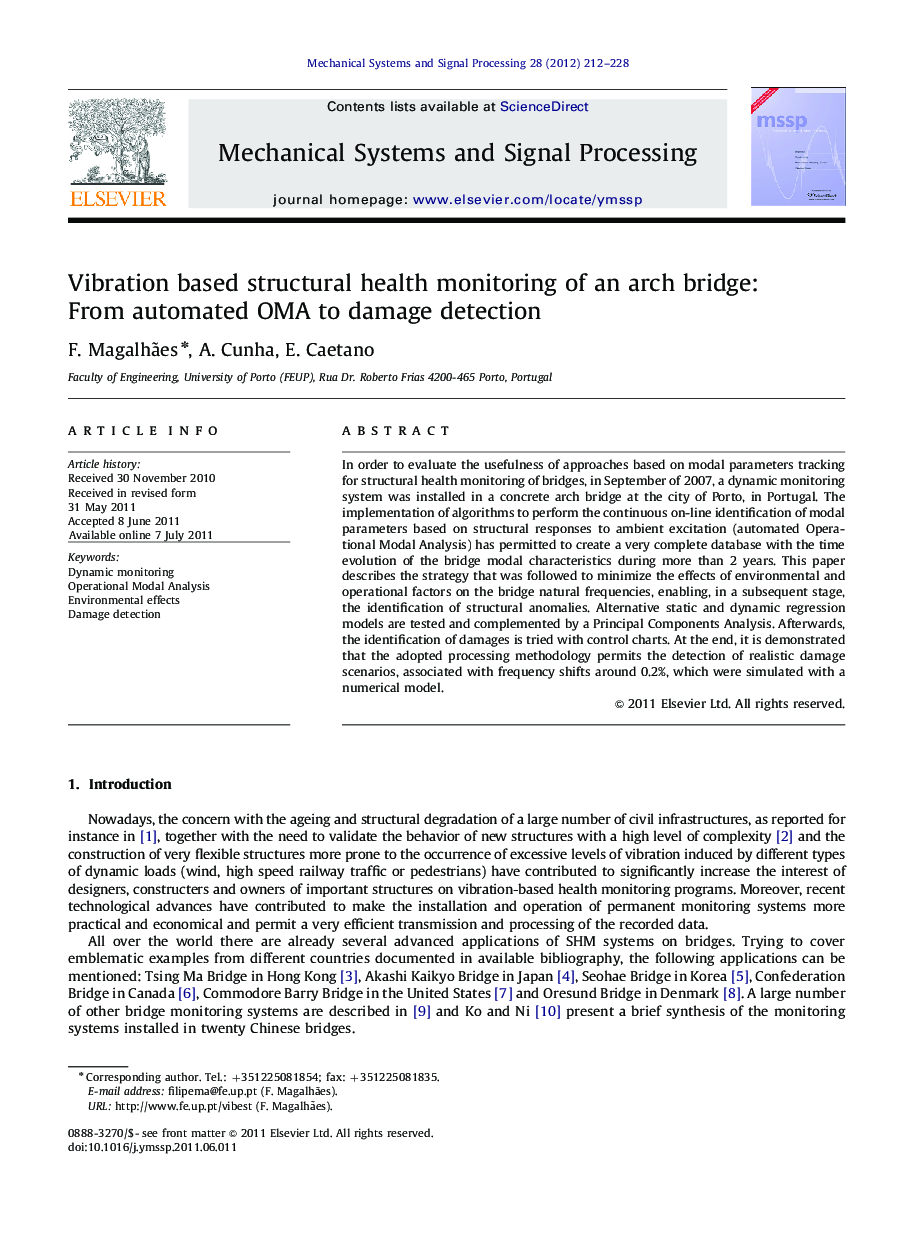| Article ID | Journal | Published Year | Pages | File Type |
|---|---|---|---|---|
| 559480 | Mechanical Systems and Signal Processing | 2012 | 17 Pages |
In order to evaluate the usefulness of approaches based on modal parameters tracking for structural health monitoring of bridges, in September of 2007, a dynamic monitoring system was installed in a concrete arch bridge at the city of Porto, in Portugal. The implementation of algorithms to perform the continuous on-line identification of modal parameters based on structural responses to ambient excitation (automated Operational Modal Analysis) has permitted to create a very complete database with the time evolution of the bridge modal characteristics during more than 2 years. This paper describes the strategy that was followed to minimize the effects of environmental and operational factors on the bridge natural frequencies, enabling, in a subsequent stage, the identification of structural anomalies. Alternative static and dynamic regression models are tested and complemented by a Principal Components Analysis. Afterwards, the identification of damages is tried with control charts. At the end, it is demonstrated that the adopted processing methodology permits the detection of realistic damage scenarios, associated with frequency shifts around 0.2%, which were simulated with a numerical model.
► Analysis of database produced by a dynamic monitoring system installed on a bridge. ► Characterization of the evolution of the bridge first 12 natural frequencies during 2 years. ► Application of statistical tools to minimize the environmental and operational effects. ► Construction of control chats for damage detection. ► The adopted methodology permits the detection of realistic damage scenarios, associated with frequency shifts around 0.2%.
